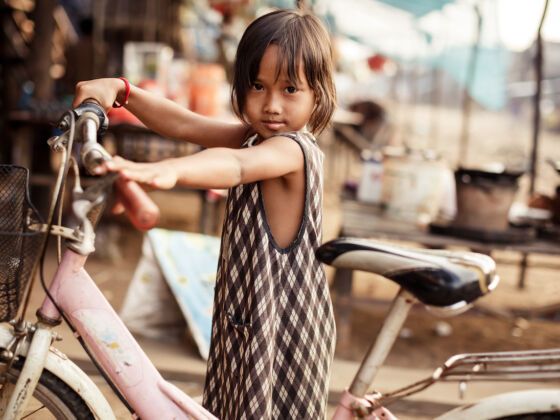The white Toyota pick-up truck bumps along the pitted dirt road and over several very questionable wooden bridges. That last pothole we cleared could have swallowed a Volkswagen. Later on we pass through a traffic jam of stubborn water buffalo.
My hands are white knuckled as I sit on the side of the pickup, clinging with all my strength. I am on my way to Tol Krol East village in the Pursat province of Cambodia.
